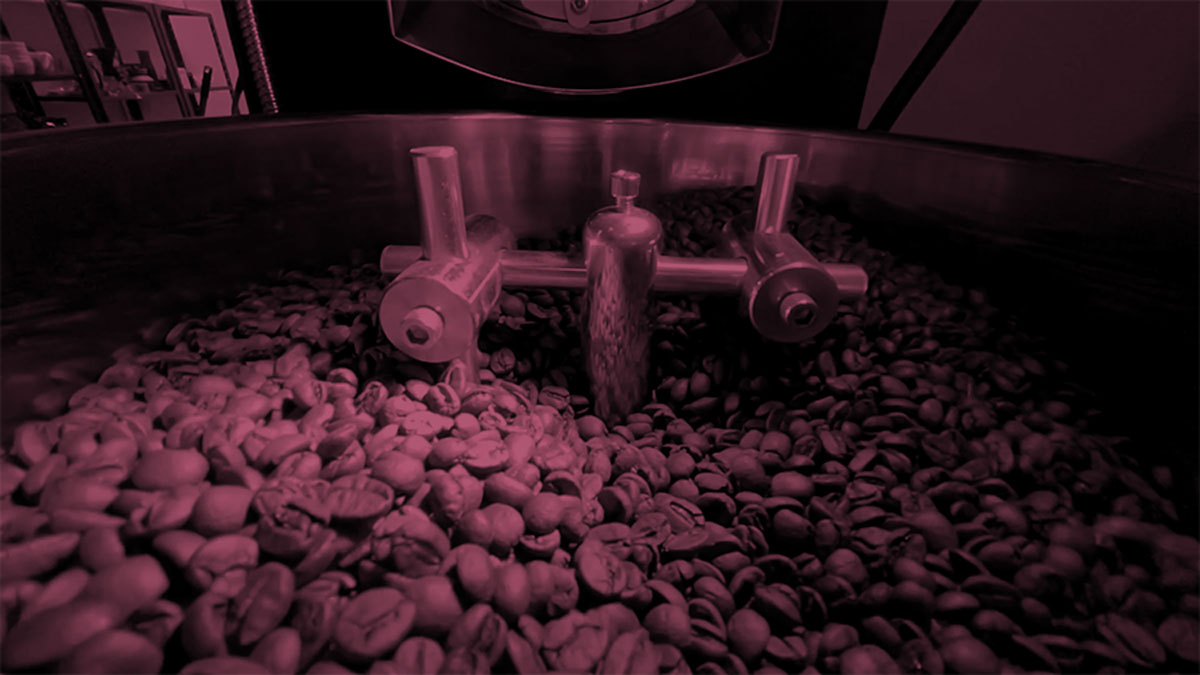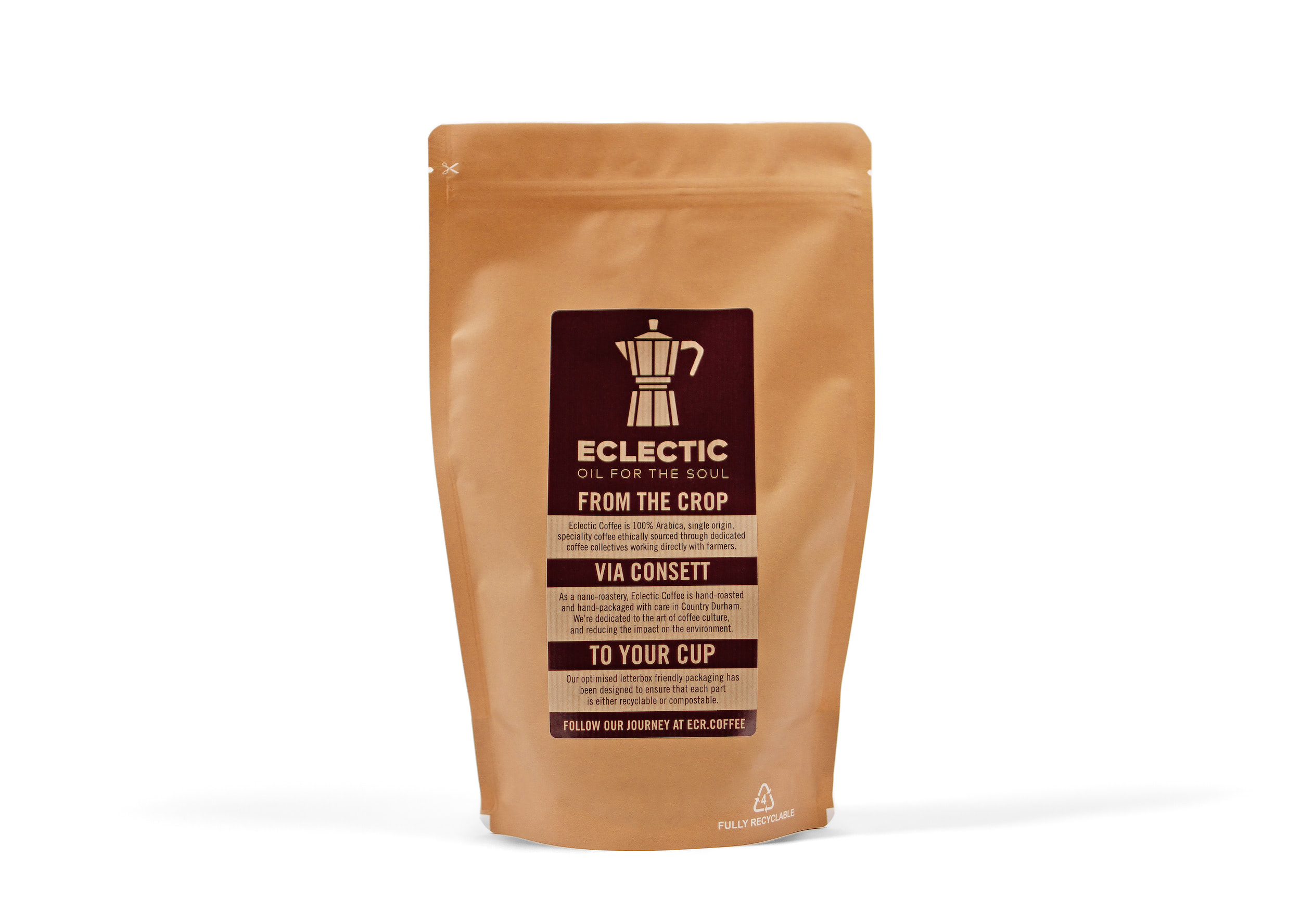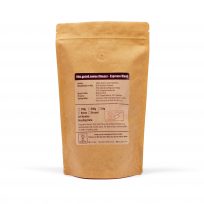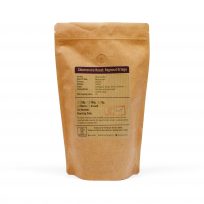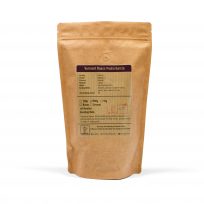DECAF: Dulces Suenos (Sweet Dreams) Roast
£9.95 – £31.95
Variety: Mixed varietal
Roast Profile: Medium dark
Process: Sparkling Water Decaf
Altitude: 1650-1900m
Origin: Jaen, Cajamarca, Peru
Tasting Notes: Orange and lemon with hazelnut and milk chocolate
SCA Cupping Score: 83.5
Description
DECAF: Dulces Suenos (Sweet Dreams) Roast
Some decaffeination methods can affect flavour, body and aroma, that’s why we use the Swiss Water® Process for the specialty coffees in our range. This gentle process is 100% free of chemical solvents and preserves the unique characteristics of each of these single origins.
This lot is a blend of day lots from producers around the San Ignacio districts, which in this case are Chirinos, San Jose de Lourdes and Tabaconas. Producers in these areas pick and process their coffee themselves and usually dry the coffee on a lined patio. Coffee is generally fermented there for 24 – 36 hours and the main varieties grow are caturra, castillo and typica.
The three districts that are represented in this blend are three of the most promising qualities areas in all of Latin America – with high altitudes and ideal growing conditions.
We believe that Peru has the potential to match up on quality to any of its origin counterparts in Latin America. We set out to prove this. The altitude of the Andes combined with rich volcanic soils and tropical rainfall means that Peru has the ideal topography and climate for producing high quality Arabica coffee.
In 2018 Falcon Peru SARL was registered as an export company and opened a small warehouse with QC lab in the northern coffee town of Jaen, Cajamarca. Farmers bring their dry parchment to the warehouse for quality analysis, some tasting their own coffees for the first time. They receive a cup score and an offer price immediately, which they can accept or refuse. In 2019 and 2020, on average Falcon paid double the commercial rate for parchment in Jaen.
In 2018 Falcon Coffees Peru was established with an initial intake of partnerships with 35 farmers. These farmers were selected based on their potential and willingness to produce outstanding qualities, and most were based in an area called Huabal.
As of 2022 Falcon Coffees Peru is:
· 275 producers across 15 districts in Cajamarca.
· 3 producer associations.
· 10 full time employees, 50% female.
THE SPARKLING WATER DECAFFEINATION PROCESS
This process was first discovered by a scientist called Kurt Zosel at the Max Planck Institute for Coal Research in 1967 as he was looking at new ways of separating mixtures of substances. In 1988, a German decaffeination company called CR3 developed this process for decaffeination whereby natural carbon dioxide (which comes from prehistoric underground lakes) is combined with water to create ‘sub-critical’ conditions which creates a highly solvent substance for caffeine in coffee. It is a gentle, natural and organically certified process and the good caffeine selectivity of the carbon dioxide guarantees a high retention level of other coffee components which contribute to taste and aroma.
The process is outlined below:
The green beans enter a ‘pre-treatment’ vessel where they are cleaned and moistened with water before being brought into contact with pressurised liquid carbon dioxide. When the green coffee beans absorb the water, they expand and the pores are opened resulting in the caffeine molecules becoming mobile.
After the water has been added, the beans are then brought into contact with the pressurised liquid carbon dioxide which combines with the water to essentially form sparkling water. The carbon dioxide circulates through the beans and acts like a magnet, drawing out the mobile caffeine molecules.
The sparkling water then enters an evaporator which precipitates the caffeine-rich carbon dioxide out of the water. The now caffeine-free water is pumped back into the vessel for a new cycle.
This cycle is repeated until the required residual caffeine level is reached. Once this has happened, the circulation of carbon dioxide is stopped and the green beans are discharged into a drier.
The decaffeinated coffee is then gently dried until it reaches its original moisture content, after which it is ready for roasting.
There are several benefits to using this process for decaffeination:
The agent used for extracting the caffeine is entirely natural and the process can be classified as ‘organic’ due to the complete lack of chemicals used throughout. There is also no health risk by consuming coffee that has been decaffeinated in this way.
The way the process works means the other compounds in the green bean are left untouched, meaning decaffeination has no effect on the flavour and aroma of the finished product. The carbon dioxide is very selective and doesn’t extract the carbohydrates and proteins in the green bean which contribute to flavour and smell.
The cell structure of the green bean and the finished roasted bean is unchanged which is of great advantage when working with speciality coffees.
The by-products are 100% natural and recyclable.
Additional information
| Weight | 0.25 kg |
|---|---|
| Dimensions | 29.5 × 19 × 5 cm |
| Grind | Whole Bean, Cafetiere, Espresso, Filter, Moka Pot |
| Weight | 250g (letterbox friendly), 500g, 1kg |

